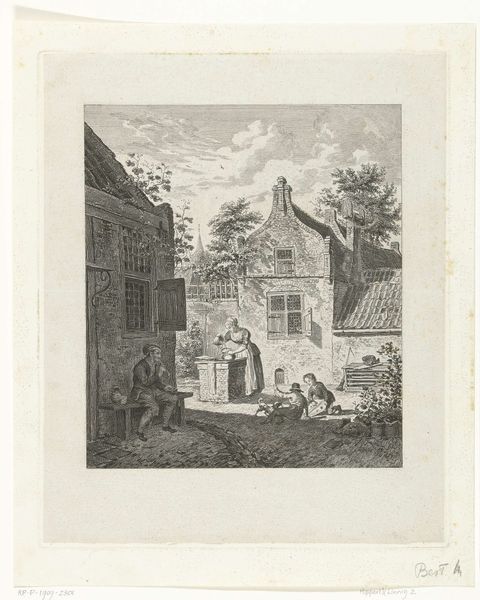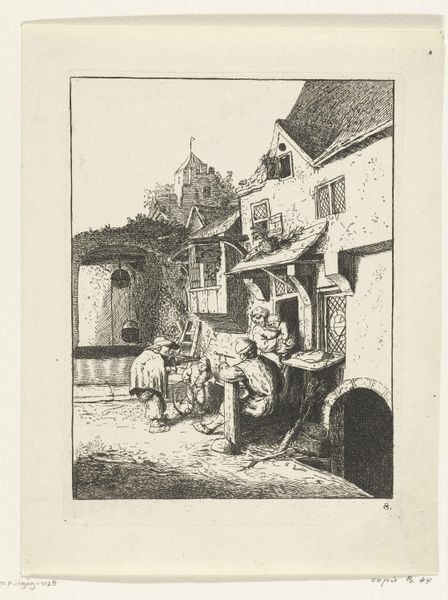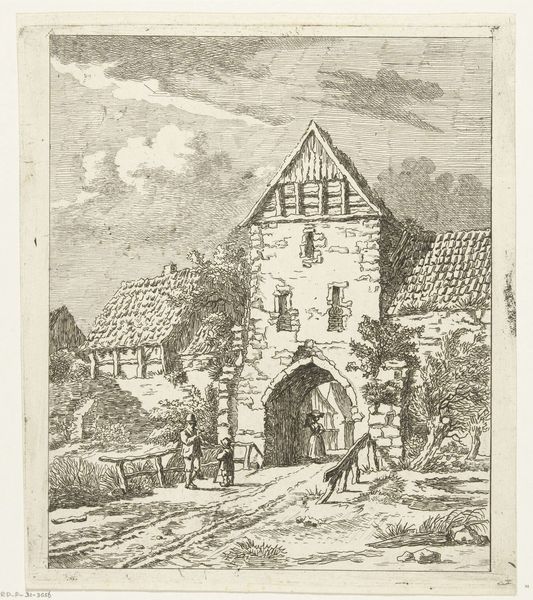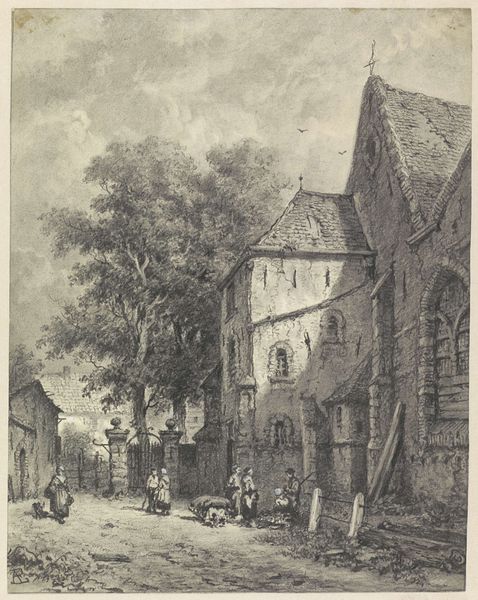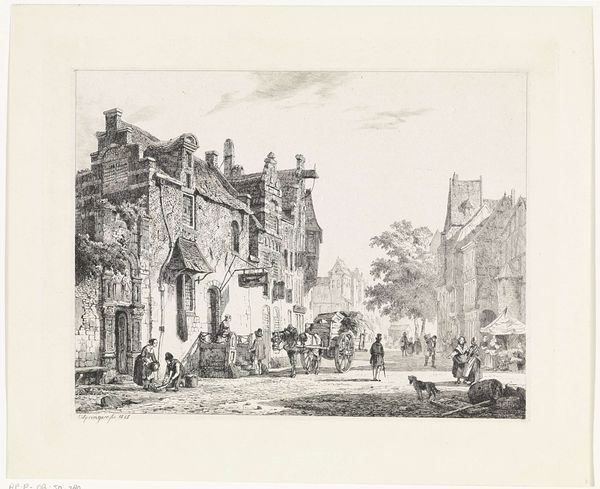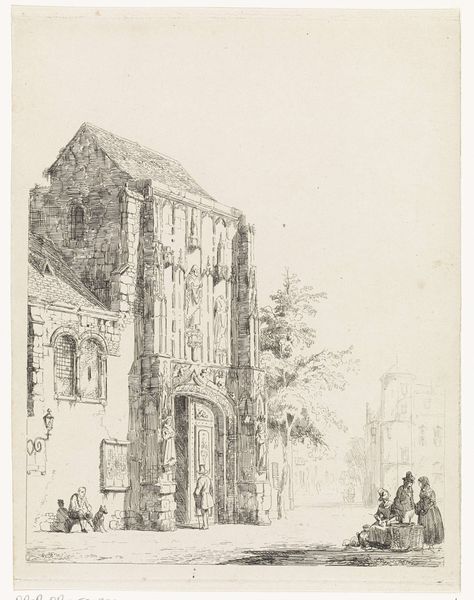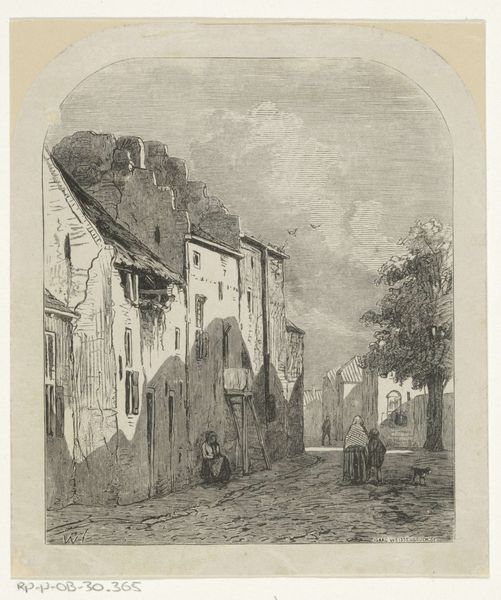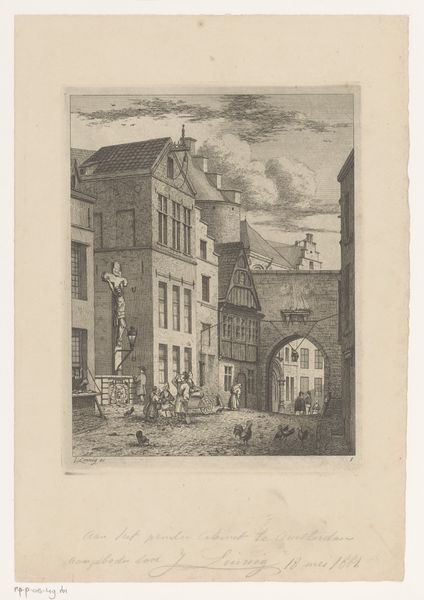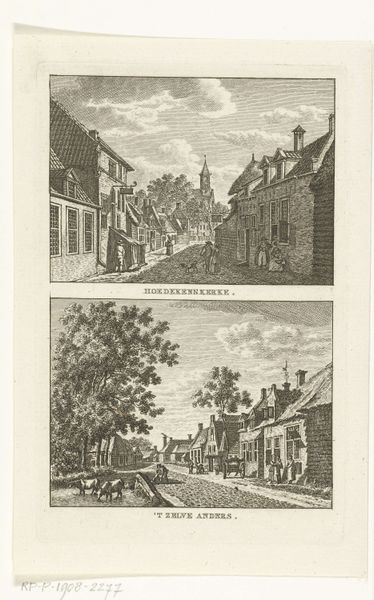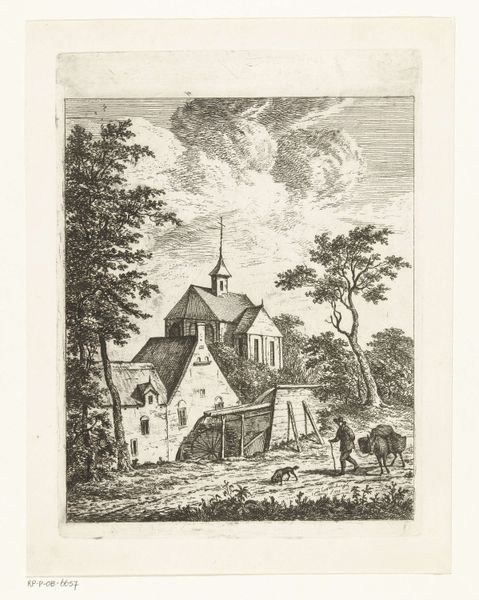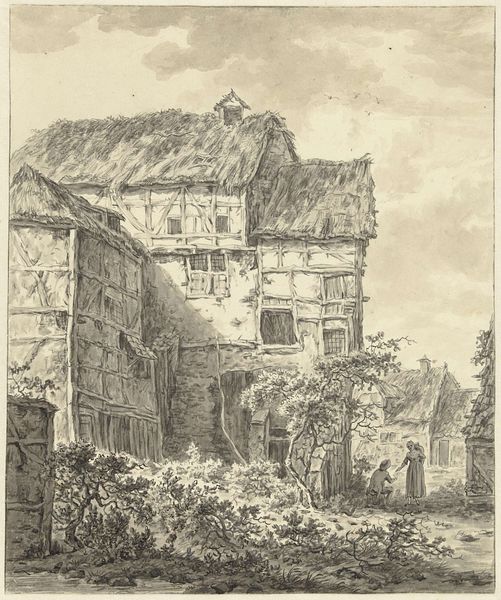
print, engraving
# print
#
landscape
#
figuration
#
child
#
romanticism
#
genre-painting
#
engraving
#
realism
Dimensions: height 190 mm, width 157 mm
Copyright: Rijks Museum: Open Domain
Curator: Here we have "Courtyard with a Boy and Girl at a Well" by Johannes Alexander Rudolf Best, created in 1823. It's an engraving, quite characteristic of the romantic period, depicting children in a domestic setting. What are your initial thoughts? Editor: It's undeniably captivating, particularly in its depiction of ordinary life. The sheer texture and detail achieved through engraving give it a sense of solidity, almost like touching brick and stone. It seems to reflect the labor of the artisans who built these homes. Curator: Absolutely. Think about the power dynamics embedded within. Best, an artist of some privilege, is depicting the children of working-class families. How are those lives being framed, and perhaps even romanticized, for a specific audience? The "innocence" projected onto childhood serves certain ideological functions. Editor: Indeed, but look closer at the textures, the wear and tear on the buildings, the carefully rendered clothing of the children. This reflects a tangible material reality, but consider what is included, and excluded from view, too. What is hidden, and why? This kind of intimate scene becomes accessible through production itself. The print medium allows for reproduction and broader circulation, potentially reaching a more democratic audience. Curator: The genre painting element certainly suggests that the children were subjects, positioned and viewed according to particular class expectations during the rise of industrialization in Europe. Were these children idealized and were they actually idealized? What did the real working life for a child mean in the 19th century in that society? Editor: And consider the labor involved in producing this print. Engraving is an exacting craft requiring specialized skill. The very act of creation transforms the scene, adding another layer of meaning through the maker's hand. This is why I resist separating “high art” from "craft." Curator: True. Examining its formal aspects alongside social concerns offers us a more holistic reading of Best's work. How its historical context shaped the realities portrayed. Editor: So while aesthetics provide the foundation, exploring production adds critical perspective, especially for understanding social dynamics through materials.
Comments
No comments
Be the first to comment and join the conversation on the ultimate creative platform.
